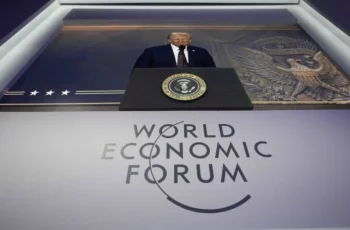The US is poised to “sell” Tomahawk cruise missiles to Ukraine. US special envoy to Ukraine, retired general Keith Kellogg, says only the final decision has to be made. The US has already agreed, Kellogg said, for deep attacks on Russian territory, and only the release of the Tomahawks is pending, a decision left to US President Donald Trump. While it may be regarded as an open and shut case by Washington, that does not take away the decision as reckless and escalatory. It puts the US on a direct collision-course with Russia, one that could lead to a war in Europe.

The Tomahawk cruise missile was originally intended to give the US nuclear triad a system that could successfully deliver nuclear weapons against the USSR. The idea was to create a system that was nearly impossible for Soviet air defenses to counter, after it became clear that conventional bombers, especially the B-52, could not operate from high altitude over Soviet territory.

Tomahawk was designed to fly “nap of the earth: missions. That is, once it was over Soviet airspace, it was designed to drop down to near tree-top heights and follow the contours of the earth, making timely detection difficult if not impossible.

Tomahawks came in three broad versions known as ALCMs (pronounced al-chems), GLCMs (pronounced Glick-ems) and SLCMs (pronounced Slick-ems). ALCMs are air launched cruise missiles typically carried by B-52 bombers. GLCMs are ground launched cruise missiles and SLCMS are sea-launched cruise missiles that can be carried by surface ships, mainly destroyers that today include the AEGIS air defense system, and submarines.
Tomahawks originally were dual capable in that they could have nuclear or conventional warheads. Partly as a result of the now-defunct Intermediate Nuclear Forces (INF) agreement, and also because a cruise missile over Soviet territory would be interpreted as a nuclear strike, the US shelved the nuclear warheads for Tomahawk. There is still confusion about what happened to these warheads: are they still in long term storage or have they been dismantled?
The US has used conventional warhead Tomahawks against Iraq, Afghanistan, ISIS in Syria, in Libya, Yugoslavia, Bosnia-Herzegovina, Somalia, in Yemen and Iran this past June. The number fired over the years is between 2,000 and 3,000 conventional Tomahawks.
There are around 4,000 Tomahawks in the US inventory, most of them modernized Block IV and Block V.
Should the US deliver Tomahawks to Ukraine, the missiles would have to be operated either by US or UK technicians and would need to be supported by US overhead intelligence to select targets and program the missiles to hit them. Russia will regard the Tomahawks as a direct US intervention, and in fact there is no convenient way the US could deny it is operating the weapons. This means that if Trump authorizes the missiles, he also is directing the US military (or surrogate British) to use them against Russia.
The Russians are saying that Tomahawks for Ukraine are not a “game changer.” By this the Russians are pointing out that the ground war in Ukraine will not be changed by Tomahawks, which in fact are largely useless in conventional war scenarios.
The Tomahawks, however, are intended to knock out critically important Russian economic assets and, secondarily, missile and air bases in Russia. The Trump administration is operating on the assumption that Russia’s economy is teetering on the brink of collapse and the Tomahawks could help “seal the deal” and force the collapse of the Putin regime.

There is some evidence that infrastructure strikes on Russian territory have been costly to Russia and have created problems, not the least of which has been significant damage to gasoline-producing refineries. Just recently Russia decided to halt gasoline and diesel exports in order to mitigate the loss of production domestically. Ukraine has also targeted other critical infrastructure segments, including nuclear power plants (so far unsuccessfully) and transport (including railroads, mostly through sabotage).
No one can say how many Tomahawk cruise missiles (and launch platforms) can be delivered to Ukraine. Nor do we know how well the Russians can cope with this weapon. Russian air defenses have evolved over the years and are far better than they were when the Tomahawk first came on line in 1983. However, as recent events demonstrate in the case of long-range drones, there are plenty of holes in Russian air defense coverage.
One of the reasons why the US is seeking to try for a knock-out blow on Putin and Russia is Washington’s fear that Russia may launch a new, devastating offensive in Ukraine aimed at regime change there. The Russian strategy, until now, has been to break the Ukrainian army and force the current Ukrainian regime to step down. There are various reports coming out that say Russia is getting ready for a big push, but so far at least the reports cannot point to hard evidence this is so. Similarly, there are reports that Ukraine plans a big offensive of its own, likely aimed at Crimea. Where Ukraine would get the troops for any such operation remains unclear -especially since the troops would have to be pulled from the front lines elsewhere, exposing Ukraine’s army to Russian exploitation of the shift in forces.

Russia has kept some capabilities in its pocket, such as use of Oreshnik missiles, which are now being serially produced. The use of Tomahawks will put heavy pressure on Russia’s leaders to step up their operations in various ways and use weapons so far mostly kept out of the conflict. How far Russia would go when provoked directly by the United States should be carefully assessed in Washington before it embarks on a venture that could backfire and lead to a wider war in Europe.
Ssource: author’s blog










Comments